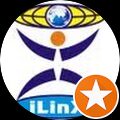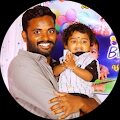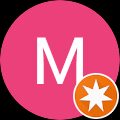Academics
Curriculum
Teaching &Learning
The following innovative teaching methods are being adopted:
Case Study Approach
Case Study Approach is an instructional method where a student got the chance to observe, analyze, record, implement, conclude, and summarize practically by studying various cases relating to different topics under finance, human resources, marketing and entrepreneurship specializations. Cases are often based on authentic events which adds a logic of perseverance or reality. A good case has adequate detail to demand research and to stimulate analysis from a variety of perspectives. They place the learner in the position of problem solver. Students become actively engaged in the materials ascertaining underlying issues, predicaments and conflict issues. Each individual case study consists of a “whole” study, in which facts are gathered from various sources and conclusions drawn on those facts.
Flipped Classroom
A learner centric method which replaces assignments with instructional lecture videos and their related resources,providing an opportunity to the student to explore the topics in a more meaningful manner .This Teaching methodology required active student engagement where in student can learn in their own pace and can discuss the outcome of concepts in the class by way of debate or group discussion in front of the instructor.
Role Play
An MBA graduate as a manager has to deal with men, money, materials and other resources for their optimal utilization and maximization of wealth. This roleplay makes a student better understand the situation and take best decisions in the organization by empathizing the real situations and applying the strategies, principles, concepts learned during the course.
Open Educational Resources
Open Educational Resources (OER) are teaching, learning and research materials in any medium – digital or otherwise – that reside in the public domain or have been released under an open license that permits no-cost access, use, adaptation and redistribution by others with no or limited restrictions.
Open educational resources like Interactive mini-lessons and simulations, Digital textbooks, streaming videos, blogs, MOOC, google sites, and any other tools, materials, or techniques used to support access to knowledge.
Outcome BasedEducation
Program Educational Objectives (PEO's)
- PEO1: Graduates will be able to apply the theoretical concepts in real life situations.
- PEO2: Graduates will be able to exhibit effective decision making skills.
- PEO3: Graduates will be capable of starting entrepreneurial ventures.
- PEO4: Graduates will be able to think critically, communicate effectively and be able to manage interpersonal relationships.
- PEO5: Graduates will be able to adapt to constantly changing environment.
Programme Outcome(PO's)
Engineering Graduates will be able to:
- Engineering knowledge: Apply the knowledge of mathematics, science, engineering fundamentals, and an engineering specialization to the solution of complex engineering problems.
- Problem analysis: Identify, formulate, review research literature, and analyze complex engineering problems reaching substantiated conclusions using first principles of mathematics, natural sciences, and engineering sciences.
- Design/development of solutions: Design solutions for complex engineering problems and design system components or processes that meet the specified needs with appropriate consideration for the public health and safety, and the cultural, societal, and environmental considerations.
- . Conduct investigations of complex problems: Use research-based knowledge and research methods including design of experiments, analysis and interpretation of data, and synthesis of the information to provide valid conclusions.
- Modern tool usage: Create, select, and apply appropriate techniques, resources, and modern engineering and IT tools including prediction and modeling to complex engineering activities with an understanding of the limitations.
- The engineer and society: Apply reasoning informed by the contextual knowledge to assess societal, health, safety, legal and cultural issues and the consequent responsibilities relevant to the professional engineering practice.
- Environment and sustainability: Understand the impact of the professional engineering solutions in societal and environmental contexts, and demonstrate the knowledge of, and need for sustainable development.
- Ethics: Apply ethical principles and commit to professional ethics and responsibilities and norms of the engineering practice.
- Individual and team work: Function effectively as an individual, and as a member or leader in diverse teams, and in multidisciplinary settings.
- . Communication: Communicate effectively on complex engineering activities with the engineering community and with society at large, such as, being able to comprehend and write effective reports and design documentation, make effective presentations, and give and receive clear instructions.
- Project management and finance: Demonstrate knowledge and understanding of the engineering and management principles and apply these to one’s own work, as a member and leader in a team, to manage projects and in multidisciplinary environments.
- Life-long learning: Recognize the need for, and have the preparation and ability to engage in independent and life-long learning in the broadest context of technological change.
Program Specific Outcomes(PSO's)
- PSO1: Apply basic managerial concepts to solve complex business problems.
- PSO2: Able to adopt dynamic changes and demonstrate professional ethics for societal and environmental well-being.




















